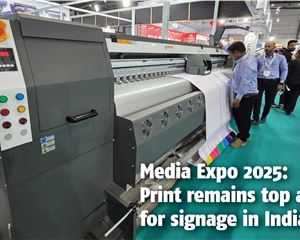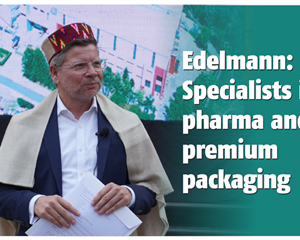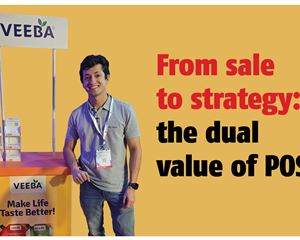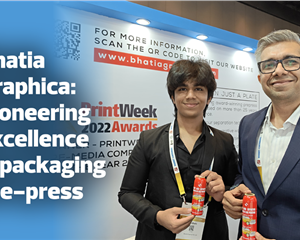We expect ink prices to soar by Rs 8-10 per kg, says Vimal Mehra
Vimal Mehra is the advisor for Sakata Inx, the 121-year-old, USD 1.29-bn size printing ink company. In this interaction with Noel D’Cunha, Mehra discusses demon, GST, rising crude prices, and ink trends, all of which is making ink production to meet the demand tricky
29 Jan 2018 | By PrintWeek India
PrintWeek India (PWI): Consumption of paper media and packaging had increased - especially in India - due to the high economic growth. How much did the twin blow of demonetisation and GST impact the bottomlines?
Vimal Mehra (VM): The estimated growth in the newspaper segment was around 2% and in packaging around 8%. The bottomline reduction for the industry was in excess of 20-25%. This reduction in profits cannot be totally passed on to demonetisation and GST. The major reason for lower bottomline was the increase in raw material prices and the industries' inability to get a price increase from the customer.
PWI: GST for printing inks was reduced from 18 to 12% from 15 November 2017 which is good news. But there was "a Sin Tax" of 28% on varnishes and reducers which was clubbed with cigarettes, liquor and luxury goods. Has the All India Printing Ink Manufacturers Association (AIPIMA) made a representation to the GST Council?
VM: The AIPIMA had taken up with GST Council the 18% levied on inks and we were successful in reducing it to 12%. Again, we approached the GST Council to reduce the GST on varnishes and I understand that the same has been brought down to 18%
PWI: There is an increase in petroleum price. How much will this affect the ink manufacturers’ input raw material prices?
VM: Not only petroleum, the prices of all raw materials are on the up since 17 October 2017. We expect the prices of inks to go up by around Rs 8-10 per kg and UV coatings to rise by Rs 30 per kg.
PWI: What are the trends we are seeing in the liquid ink space? Does India remain a dominant gravure market? Or a mindset shift to flexo (narrow and CI) has begun?
VM: Gravure still enjoys 85%+ of the liquid inks segment. But we see new investments in the CI flexo and narrow web segment by the existing gravure printers. Flexo will definitely have higher growth than gravure in the coming years.
PWI: There was a flurry of capital which was pumped into ink factories? Did the momentum continue in 2017? Or ink companies focussed on streamlining and de-bottlenecking?
VM: Fresh investment were made in manufacturing by all major ink companies in 2016-17. Some of these investments were to improve efficiency and some for improving quality. It also led to higher capacity. As the growth got impacted due to demonetisation and GST, there is under-utilisation of capacity.
PWI: What do your numbers say for 2018?
VM: We expect better growth in 2018 and higher capacity utilisation, which will improve top and bottomlines.
PWI: From an application point of view, we noticed the strongest growth coming from an increasing demand for low migration solutions, UV inks for food packaging as well as other sensitive applications for cosmetics and pharmaceuticals. Your view about low migration inks? What is the total percentage of use?
VM: Health and environment have become major concern areas for the food and pharma companies. As the awareness of these issues spreads, it will lead to higher demands for safe inks.
PWI: Your view about low migration inks? What is the total percentage of use?
VM: In a country like India, where we still use newspaper for packing food and roadside vendors have a thriving business, the growth of low migration inks will remain restricted to few brands only. But it will grow, that much is definite.
PWI: The global UV ink market will reach USD3.5 billion in 2020, with a CAGR of 15.7% from 2015-2020. What are the India numbers for UV inks?
VM: The total global ink market is estimated to be around USD 16-17 billion, which includes all kinds of inks. The UV inks will have to be 20% if it has to be worth USD 3.5 billion. This seems to be incorrect.
PWI: What are the India numbers for UV inks?
VM: In India, we estimate UV inks market to be close to 2,000 tonnes and UV coatings around 4,500 tonnes. This is less than 3% of the total ink market.
PWI: What is the future of UV in terms of safety and regulations?
VM:: The fastest growing segment in the printing arena is UV printing. The inherent ink chemistry of UV assures safety and passes various health and environment regulations. The technology is still evolving and will make it much more user-friendly as well as bring down the cost in near future to make it a cost-effective technology. The growth of UV in printing is assured for the next decade or so.
PWI: What's your India print and packaging industry outlook for 2018?
VM: As a growing economy, the disposable income is increasing. Our consumption clout is increasing manifold. Our appetite for branded products and hygienic food is on the rise. This will boost the packaging industry. Increase in literacy plus government spending on education for all will boost the commercial/book printing industry. Quality will rule and hence investment in improving efficiency. In addition, quality is of paramount importance. The fitter will survive and the inefficient will perish.












 See All
See All